Clover Health (NASDAQ:CLOV) Reports Sales Below Analyst Estimates In Q4 Earnings

Health insurance company Clover Health (NASDAQ:CLOV) missed Wall Street’s revenue expectations in Q4 CY2024, with sales falling 34% year on year to $337 million. Its GAAP loss of $0.04 per share was $0.03 above analysts’ consensus estimates.
Is now the time to buy Clover Health? Find out in our full research report .
Clover Health (CLOV) Q4 CY2024 Highlights:
"2024 was a pivotal year for us as we demonstrated that our technology-first physician empowerment model, combined with our ability to directly manage members via our home care arm, achieves differentiated clinical and financial results," said Clover Health CEO Andrew Toy.
Company Overview
Founded in 2014, Clover Health (NASDAQ:CLOV) is a tech-driven health insurance company that offers Medicare Advantage plans to seniors, focusing on improving health outcomes through data analytics and a unique care model.
Health Insurance Providers
Upfront premiums collected by health insurers lead to reliable revenue, but profitability ultimately depends on accurate risk assessments and the ability to control medical costs. Health insurers are also highly sensitive to regulatory changes and economic conditions such as unemployment. Going forward, the industry faces tailwinds from an aging population, increasing demand for personalized healthcare services, and advancements in data analytics to improve cost management. However, continued regulatory scrutiny on pricing practices, the potential for government-led reforms such as expanded public healthcare options, and inflation in medical costs could add volatility to margins. One big debate among investors is the long-term impact of AI and whether it will help underwriting, fraud detection, and claims processing or whether it may wade into ethical grey areas like reinforcing biases and widening disparities in medical care.
Sales Growth
A company’s long-term sales performance is one signal of its overall quality. Even a bad business can shine for one or two quarters, but a top-tier one grows for years. Over the last five years, Clover Health grew its sales at an excellent 24.3% compounded annual growth rate. Its growth beat the average healthcare company and shows its offerings resonate with customers.
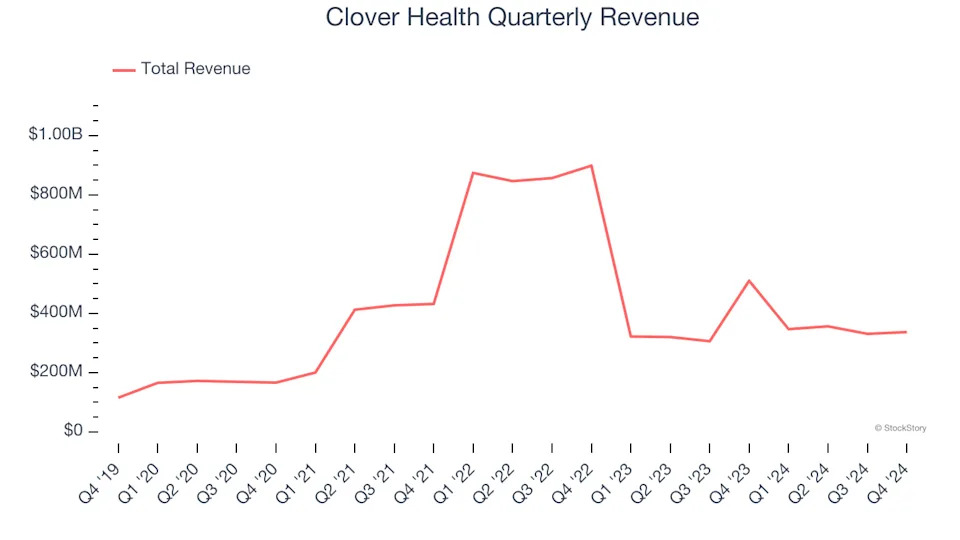
Long-term growth is the most important, but within healthcare, a half-decade historical view may miss new innovations or demand cycles. Clover Health’s recent history marks a sharp pivot from its five-year trend as its revenue has shown annualized declines of 37.2% over the last two years.
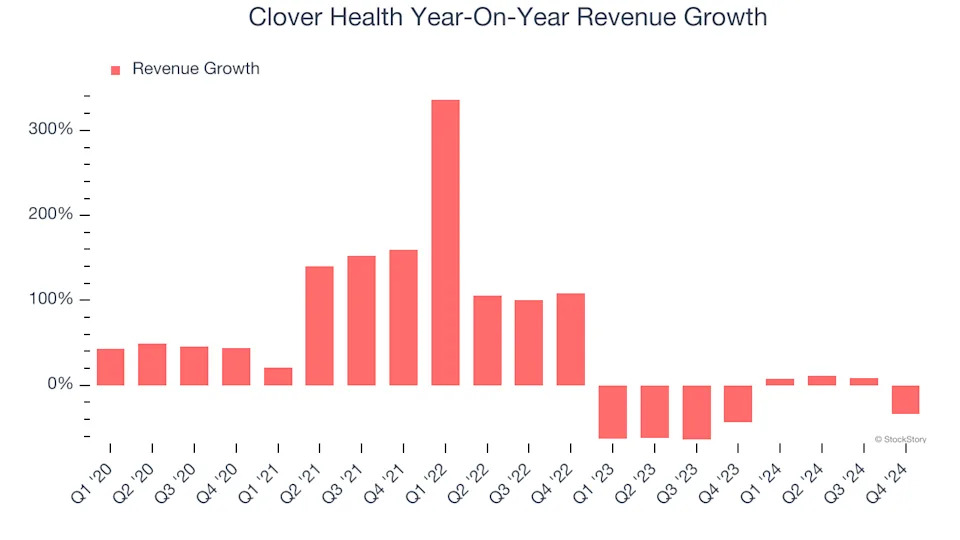
We can dig further into the company’s revenue dynamics by analyzing its number of customers, which reached 82,664 in the latest quarter. Over the last two years, Clover Health’s customer base averaged 3.6% year-on-year declines. Because this number is better than its revenue growth, we can see the average customer spent less money each year on the company’s products and services.
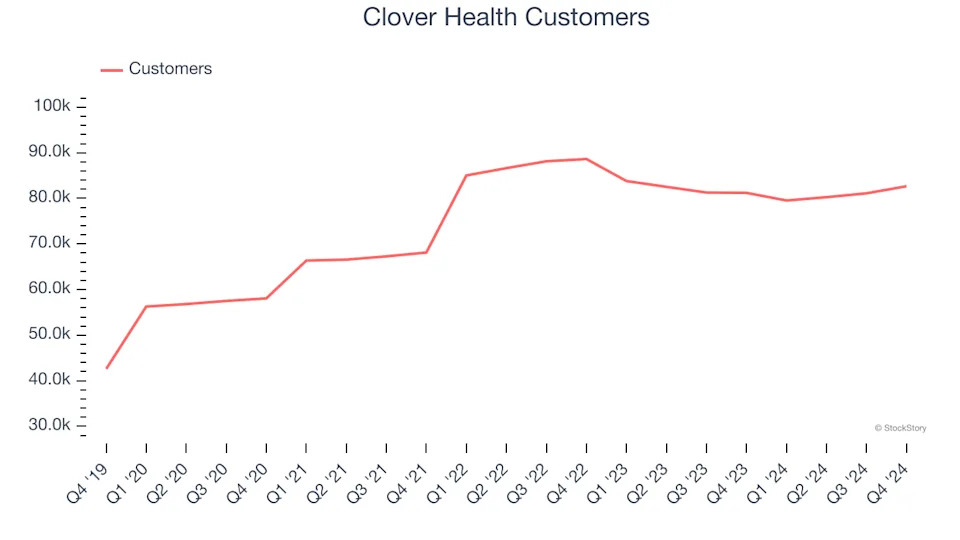
This quarter, Clover Health missed Wall Street’s estimates and reported a rather uninspiring 34% year-on-year revenue decline, generating $337 million of revenue.
Looking ahead, sell-side analysts expect revenue to grow 20.7% over the next 12 months, an improvement versus the last two years. This projection is eye-popping and implies its newer products and services will spur better top-line performance.
Software is eating the world and there is virtually no industry left that has been untouched by it. That drives increasing demand for tools helping software developers do their jobs, whether it be monitoring critical cloud infrastructure, integrating audio and video functionality, or ensuring smooth content streaming. .
Operating Margin
Operating margin is a key measure of profitability. Think of it as net income - the bottom line - excluding the impact of taxes and interest on debt, which are less connected to business fundamentals.
Clover Health’s high expenses have contributed to an average operating margin of negative 16.4% over the last five years. Unprofitable healthcare companies require extra attention because they could get caught swimming naked when the tide goes out. It’s hard to trust that the business can endure a full cycle.
On the plus side, Clover Health’s operating margin rose by 2.6 percentage points over the last five years, as its sales growth gave it operating leverage. This performance was mostly driven by its recent improvements as the company’s margin has increased by 7.9 percentage points on a two-year basis.
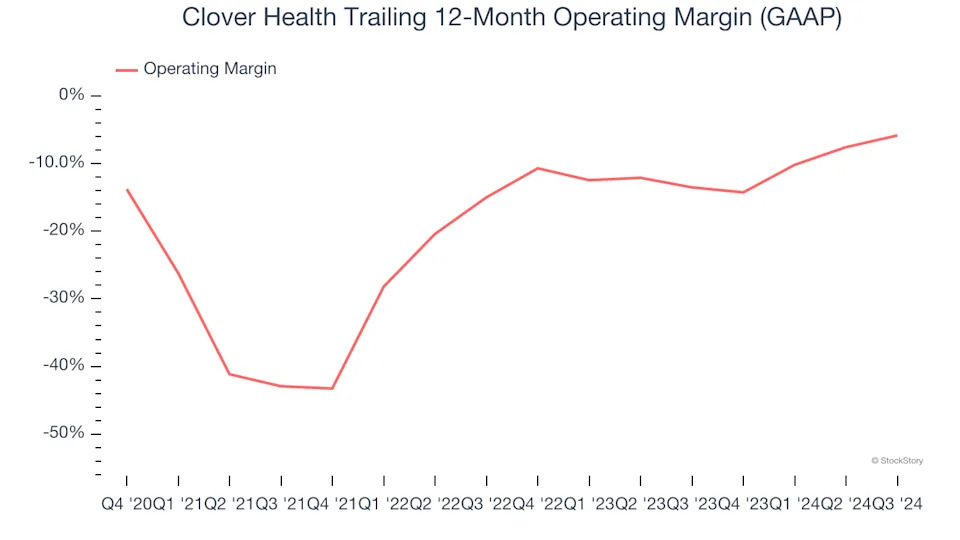
in line with the same quarter last year. This indicates the company’s overall cost structure has been relatively stable.
Earnings Per Share
We track the long-term change in earnings per share (EPS) for the same reason as long-term revenue growth. Compared to revenue, however, EPS highlights whether a company’s growth is profitable.
Although Clover Health’s full-year earnings are still negative, it reduced its losses and improved its EPS by 40.9% annually over the last four years. The next few quarters will be critical for assessing its long-term profitability.
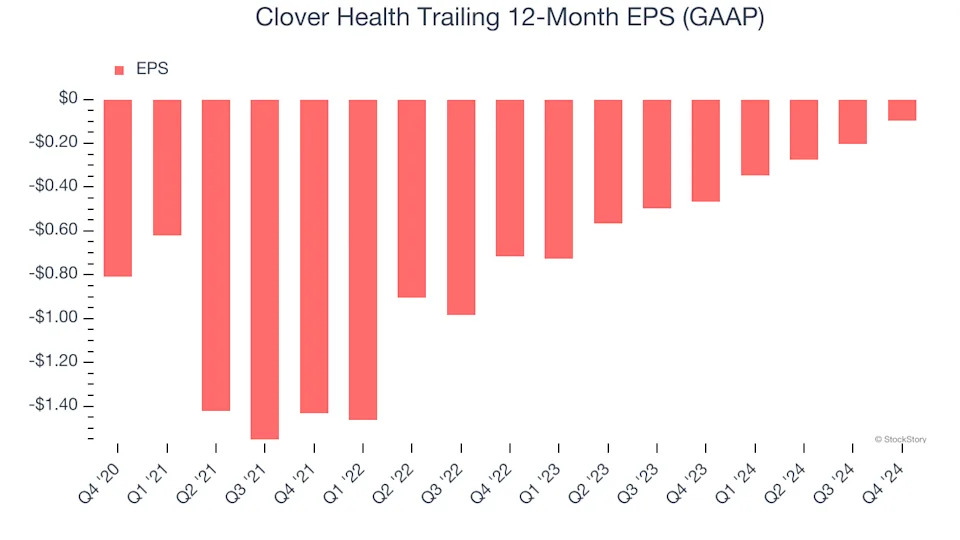
In Q4, Clover Health reported EPS at negative $0.04, up from negative $0.15 in the same quarter last year. This print easily cleared analysts’ estimates, and shareholders should be content with the results. Over the next 12 months, Wall Street is optimistic. Analysts forecast Clover Health’s full-year EPS of negative $0.10 will reach break even.
Key Takeaways from Clover Health’s Q4 Results
We were impressed by how significantly Clover Health blew past analysts’ EPS and EBITDA expectations this quarter. We were also glad its full-year EBITDA guidance trumped Wall Street’s estimates. On the other hand, its revenue missed. Still, this quarter had some key positives. The stock remained flat at $4.16 immediately after reporting.
Sure, Clover Health had a solid quarter, but if we look at the bigger picture, is this stock a buy? If you’re making that decision, you should consider the bigger picture of valuation, business qualities, as well as the latest earnings. We cover that in our actionable full research report which you can read here, it’s free .




